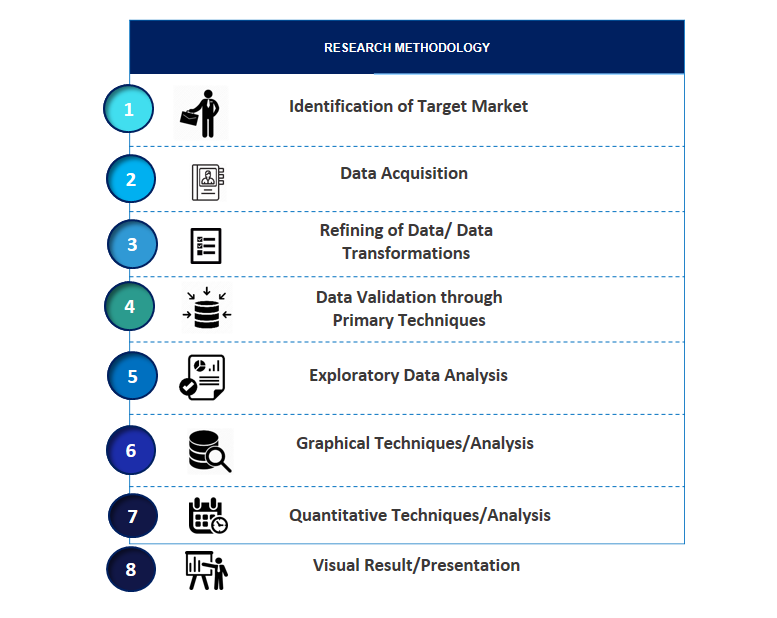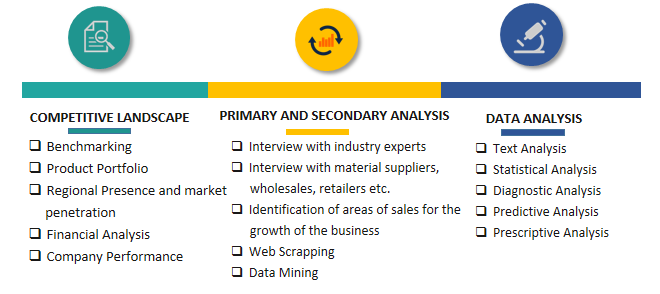Europe Cheese Market Introduction and Overview
According to SPER Market Research, the Europe Cheese Market is estimated to reach USD 109.66 billion by 2033 with a CAGR of 4.63%.
The report includes an in-depth analysis of the Europe Cheese Market, including market size and trends, product mix, distribution channels, and supplier analysis. Cheese, a dairy product, is produced by coagulating milk proteins and separating the curds and whey. It comes in a variety of textures, flavors, and shapes, from soft and creamy to hard and harsh. Cheese is a versatile and popular culinary item that may be used in recipes or consumed on its own.
- Granarolo S.p.A. announced the acquisition of Mario Costa S.p.A., a well-known PDO Gorgonzola cheese maker, in November 2021.
- In October 2021, Sodiaal declared that it would invest a total of EUR 170 million over the following five years to facilitate the growth of its Cheese division.
- September 2021: A variety of flavored hot cheese bites were introduced by Bel UK, a division of Bel Group, to further develop the Boursin cheese brand.
- In October 2021, Sodiaal declared that it would invest a total of EUR 170 million over the following five years to facilitate the growth of its Cheese division.
Market Opportunities and Challenges
Opportunities: Supermarkets and hypermarkets are the main drivers of off-trade channels' significant market share. The main elements influencing cheese sales through these channels include strategic product placement, specific shelf space for cheese products, and the availability of both local and international brands. Additionally, the industry is being driven by consumer preferences that are shifting in favor of natural, organic, and artisanal cheeses. The pursuit of unique flavors and textures drives innovation in the cheese-making industry. This change reflects customers' increasing appreciation for authenticity, diversity, and quality, which is pushing producers to broaden their product offers and experiment with new manufacturing methods to keep up with changing consumer preferences.
Challenges: Cheese products present inventory management problems since they require careful storage to ensure quality and safety. Their short shelf life highlights how important it is to rotate and monitor them effectively. If appropriate storage conditions are not maintained, spoiling may occur, resulting in waste and financial losses for retailers and producers. Moreover, regulatory barriers provide a major challenge because complying with EU rules requires meeting strict quality and safety standards. Furthermore, standardization initiatives and marketing plans are complicated by the variety of cheese varieties and regional preferences found throughout Europe. European producers face a significant challenge from global competition in the form of imports from nations with lower manufacturing costs.
Market Competitive Landscape
The top five companies in the European cheese market have 12.76% of the market, which is fragmented. Groupe Lactalis, Saputo Inc., Hochland Holding GmbH & Co. KG, Arla Foods amba, and The Kraft Heinz Company are the leading companies in this market.
Scope of the Report:
| Report Metric | Details |
| Market size available for years | 2020-2033 |
| Base year considered | 2023 |
| Forecast period | 2024-2033 |
| Segments covered | By Product, By Source, By Type, By Product, By Distribution Channel, By Format
|
| Regions covered | UK, France, Germany, Italy, Spain, Rest of Europe
|
| Companies Covered | Arla Foods amba, Bel Group, Egidio Galbani SRL, Granarolo SpA, Groupe Lactalis, Groupe Sodiaal, Hochland Holding GmbH & Co. KG, Kingcott Dairy, Koninklijke ERU Kaasfabriek BV, Saputo Inc., Savencia Fromage & Dairy, The Kraft Heinz Company, Others
|
COVID-19 Impact on Europe Cheese Market
The COVID-19 epidemic has brought about a number of issues that have altered the industry environment and had a substantial influence on the European cheese market. Due to border closures and lockdown measures, which made it more difficult to transfer goods and raw materials, one of the most immediate repercussions was the disruption of supply chains. For producers, especially smaller-scale companies, this resulted in higher costs and bottlenecks in the logistics chain. Furthermore, the loss of cafés, restaurants, and other foodservice businesses significantly decreased the market for cheese, which put a burden on many manufacturers' finances and resulted in excess inventory.
Key Target Audience:
- Retailers and Distributors
- Foodservice Providers
- Cheese Producers and Manufacturers
- Importers and Exporters
- Consumers
- Regulatory Authorities
Our in-depth analysis of the Europe Cheese Market includes the following segments:
|
By Source: |
Cow Milk
Buffalo Milk
Goat Milk
Others
|
|
By Type: |
Natural
Processed
|
|
By Product: |
Mozzarella
Cheddar
Feta
Parmesan
Roquefort
|
|
By Distribution Channel: |
Supermarkets and Hypermarkets
Convenience Stores
Specialty Stores
Online
Others
|
|
By Format: |
Slices
Diced/Cubes
Shredded
Blocks
Spreads
Liquid
|
Key Topics Covered in the Report:
- Europe Cheese Market Size (FY’2024-FY’2033)
- Overview of Europe Cheese Market
- Segmentation of Europe Cheese Market By Source (Cow Milk, Buffalo Milk, Goat Milk, Others, )
- Segmentation of Europe Cheese Market By Type (Natural, Processed)
- Segmentation of Europe Cheese Market By Product (Mozzarella, Cheddar, Feta, Parmesan, Roquefort, Others)
- Segmentation of Europe Cheese Market By Distribution Channel (Supermarkets and Hypermarkets, Convenience Stores, Specialty Stores, Online, Others)
- Segmentation of Europe Cheese Market By Format (Slices, Diced/Cubes, Shredded, Blocks, Spreads, Liquid, Others)
- Expansion Analysis of Europe Cheese Market
- Problems and Obstacles in Europe Cheese Market
- Competitive Landscape in the Europe Cheese Market
- Impact of COVID-19 and Demonetization on Europe Cheese Market
- Details on Current Investment in Europe Cheese Market
- Competitive Analysis of Europe Cheese Market
- Prominent Players in the Europe Cheese Market
- SWOT Analysis of Europe Cheese Market
- Europe Cheese Market Future Outlook and Projections (FY’2024-FY’2033)
- Recommendations from Analyst
1. Introduction
1.1. Scope of the report
1.2. Market segment analysis
2. Research Methodology
2.1. Research data source
2.1.1. Secondary Data
2.1.2. Primary Data
2.1.3. SPER’s internal database
2.1.4. Premium insight from KOL’s
2.2. Market size estimation
2.2.1. Top-down and Bottom-up approach
2.3. Data triangulation
3. Executive Summary
4. Market Dynamics
4.1. Driver, Restraint, Opportunity and Challenges analysis
4.1.1. Drivers
4.1.2. Restraints
4.1.3. Opportunities
4.1.4. Challenges
4.2. COVID-19 Impacts of the Europe Cheese Market
5. Market variable and outlook
5.1. SWOT Analysis
5.1.1. Strengths
5.1.2. Weaknesses
5.1.3. Opportunities
5.1.4. Threats
5.2. PESTEL Analysis
5.2.1. Political Landscape
5.2.2. Economic Landscape
5.2.3. Social Landscape
5.2.4. Technological Landscape
5.2.5. Environmental Landscape
5.2.6. Legal Landscape
5.3. PORTER’s Five Forces
5.3.1. Bargaining power of suppliers
5.3.2. Bargaining power of buyers
5.3.3. Threat of Substitute
5.3.4. Threat of new entrant
5.3.5. Competitive rivalry
5.4. Heat Map Analysis
6. Competitive Landscape
6.1. Europe Cheese Market Manufacturing Base Distribution, Sales Area, Product Type
6.2. Mergers & Acquisitions, Partnerships, Product Launch, and Collaboration in Europe Cheese Market
7. Europe Cheese Market, By Source (USD Million) 2020-2033
7.1. Europe Cheese Market Size, Share and Forecast, By Source, 2020-2026
7.2. Europe Cheese Market Size, Share and Forecast, By Source, 2027-2033
7.3. Cow Milk
7.4. Buffalo Milk
7.5. Goat Milk
7.6. Others
8. Europe Cheese Market, By Type (USD Million) 2020-2033
8.1. Europe Cheese Market Size, Share and Forecast, By Type, 2020-2026
8.2. Europe Cheese Market Size, Share and Forecast, By Type, 2027-2033
8.3. Natural
8.4. Processed
9. Europe Cheese Market, By Product (USD Million) 2020-2033
9.1. Europe Cheese Market Size, Share and Forecast, By Product, 2020-2026
9.2. Europe Cheese Market Size, Share and Forecast, By Product, 2027-2033
9.3. Mozzarella
9.4. Cheddar
9.5. Feta
9.6. Parmesan
9.7. Roquefort
9.8. Others
10. Europe Cheese Market, By Distribution Channel (USD Million) 2020-2033
10.1. Europe Cheese Market Size, Share and Forecast, By Distribution Channel, 2020-2026
10.2. Europe Cheese Market Size, Share and Forecast, By Distribution Channel, 2027-2033
10.3. Supermarkets and Hypermarkets
10.4. Convenience Stores
10.5. Specialty Stores
10.6. Online
10.7. Others
11. Europe Cheese Market, By Format (USD Million) 2020-2033
11.1. Europe Cheese Market Size, Share and Forecast, By Format, 2020-2026
11.2. Europe Cheese Market Size, Share and Forecast, By Format, 2027-2033
11.3. Slices
11.4. Diced/Cubes
11.5. Shredded
11.6. Blocks
11.7. Spreads
11.8. Liquid
11.9. Others
12. Europe Cheese Market Forecast, 2020-2033 (USD Million)
12.1. Europe Cheese Market Size and Market Share
13. Europe Cheese Market, By Region, 2020-2033 (USD Million)
13.1. Europe Cheese Market Size and Market Share By Region (2020-2026)
13.2. Europe Cheese Market Size and Market Share By Region (2027-2033)
13.3. France
13.4. Germany
13.5. Italy
13.6. United Kingdom
13.7. Rest of Europe
14. Company Profile
14.1. Arla Foods amba
14.1.1. Company details
14.1.2. Financial outlook
14.1.3. Product summary
14.1.4. Recent developments
14.2. Bel Group
14.2.1. Company details
14.2.2. Financial outlook
14.2.3. Product summary
14.2.4. Recent developments
14.3. Egidio Galbani SRL
14.3.1. Company details
14.3.2. Financial outlook
14.3.3. Product summary
14.3.4. Recent developments
14.4. Granarolo SpA
14.4.1. Company details
14.4.2. Financial outlook
14.4.3. Product summary
14.4.4. Recent developments
14.5. Groupe Lactalis
14.5.1. Company details
14.5.2. Financial outlook
14.5.3. Product summary
14.5.4. Recent developments
14.6. Groupe Sodiaal
14.6.1. Company details
14.6.2. Financial outlook
14.6.3. Product summary
14.6.4. Recent developments
14.7. Hochland Holding GmbH & Co. KG
14.7.1. Company details
14.7.2. Financial outlook
14.7.3. Product summary
14.7.4. Recent developments
14.8. Kingcott Dairy
14.8.1. Company details
14.8.2. Financial outlook
14.8.3. Product summary
14.8.4. Recent developments
14.9. Koninklijke ERU Kaasfabriek BV
14.9.1. Company details
14.9.2. Financial outlook
14.9.3. Product summary
14.9.4. Recent developments
14.10. Saputo Inc.
14.10.1. Company details
14.10.2. Financial outlook
14.10.3. Product summary
14.10.4. Recent developments
14.11. Savencia Fromage & Dairy
14.11.1. Company details
14.11.2. Financial outlook
14.11.3. Product summary
14.11.4. Recent developments
14.12. The Kraft Heinz Company
14.12.1. Company details
14.12.2. Financial outlook
14.12.3. Product summary
14.12.4. Recent developments
14.13. Others
15. List of Abbreviations
16. Reference Links
17. Conclusion
18. Research Scope
SPER Market Research’s methodology uses great emphasis on primary research to ensure that the market intelligence insights are up to date, reliable and accurate. Primary interviews are done with players involved in each phase of a supply chain to analyze the market forecasting. The secondary research method is used to help you fully understand how the future markets and the spending patterns look likes.
The report is based on in-depth qualitative and quantitative analysis of the Product Market. The quantitative analysis involves the application of various projection and sampling techniques. The qualitative analysis involves primary interviews, surveys, and vendor briefings. The data gathered as a result of these processes are validated through experts opinion. Our research methodology entails an ideal mixture of primary and secondary initiatives.


